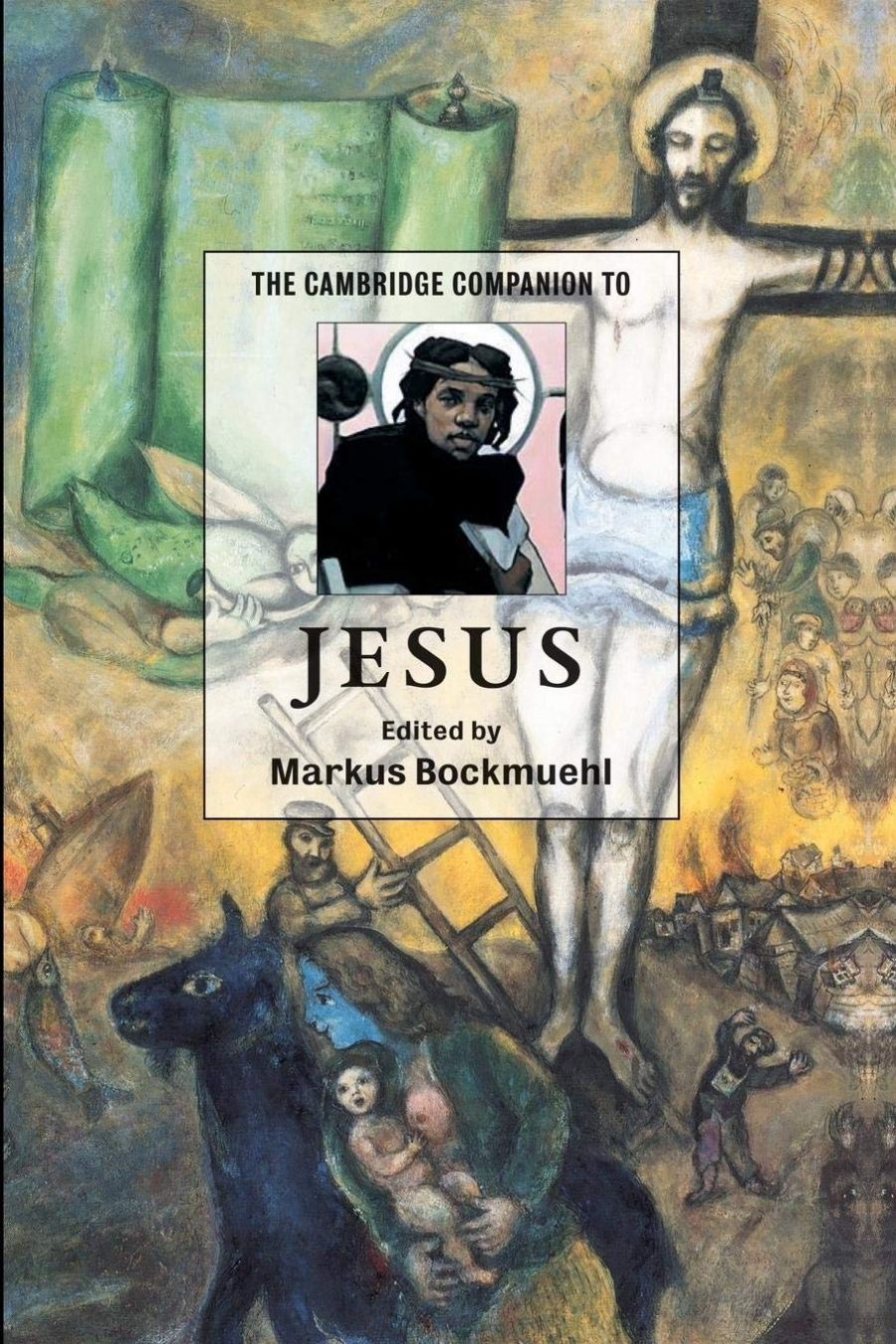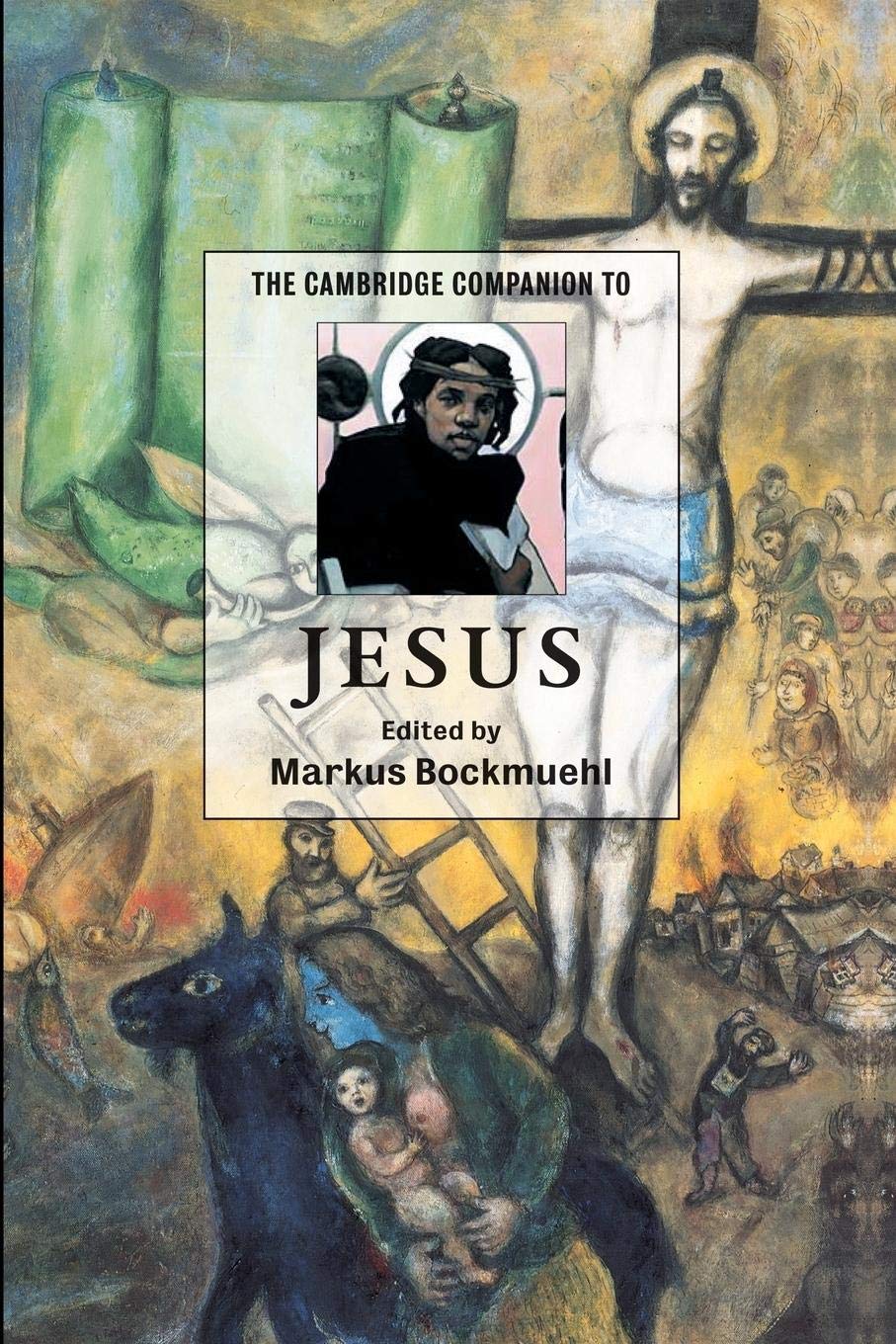
- Free Article: No
- Contents Category: Religion
- Review Article: Yes
- Article Title: Hijacking Jesus
- Online Only: No
- Custom Highlight Text:
Companions may be in short supply in the world of the flesh, but in the print media there are many on offer. Cambridge University Press has just released its seventh ‘Companion to Religion’, and another nine are waiting in line. If none of these appeals, there are a host of companions from other publishing houses offering their services. Companions, it seems, are now adjudged to be the suitable mode for bringing the latest in religious scholarship to a wider readership. ‘Handbooks’ are perhaps too simple; ‘Essays’ too boutique: both have attempted to package information in theology, religion and biblical studies.
- Book 1 Title: The Cambridge Companion to Jesus
- Book 1 Biblio: CUP, $49.95 pb, 329 pp
- Book 1 Cover Small (400 x 600):

- Book 1 Cover (800 x 1200):

In this volume, seventeen scholars contribute to a companion that is intended to ‘provide an accessible and stimulating introduction to the subject for new readers and non-specialists’. Conscious that perspective and methodology should no longer be mystified, the editor has divided the collection into two parts. The first provides up-to-date critical reviews of the historical evidence for Jesus, all of which operate largely from a desire to reposition Jesus in a first-century Jewish context. Jesus as Jew has become the historical commitment: itself a contemporary concern for a church living in the shadow of Auschwitz. Even so, the concern remains to identify this Jesus in and from the four gospels of the Christian canon. The second recognises that the resources for completing the work in the first part of the book are themselves tendentious documents, just as those who work with the stories of Jesus are not without their own interests. This provides warrant for pursuing a broader sweep of the various appropriations of the Jesus story in theology, piety, mission and inter-faith connections.
The title takes us back to the late nineteenth century when CUP offered another companion for its reading public. The Cambridge Companion to the Bible, published in 1893, was the black-ink substitute for the warm red blood of a band of fellows going on a tour of Europe or on a reading party through the wilds of Wales or Scotland – much safer and cheaper, of course, and less open to suspicion. The smell of a new book was always to be preferred to the smell of scandal, though journalists at the time might have disagreed.
The production of this new companion is revealing because of its tacit witness to two observations derived from a comparison with its forebear. The first is that the industry of biblical scholarship has expanded enormously. What could be held within the bounds of one polymath companion now demands a more specialised entourage. Jesus, Paul, biblical interpretation and feminist theology all require discrete focus, with no necessary exchange either between them or with another series of Cambridge Companions, such as in philosophy. This is most obvious in the lack of treatment of feminist critiques of the historiographies that have governed treatments of the study of Jesus, whether in its positivist or social-scientific guises.
The second observation is that the nineteenth-century struggles over history, faith and the engagement of the church with the world, which rocked the ecclesiastical Establishment, still provide the broad lines and questions of enquiry, with not dissimilar results. Even the repetition of the motif of the ‘footprint’ of Jesus on the last two thousand years of human history could have been lifted from a ‘consensus of faith’ argument heard on any church or missionary platform in late Victorian England. Brooke Foss Westcott’s contribution on the sacred books of other faiths, in the 1893 volume, was omitted in a revised companion published in 1916, when events in Europe drove Western scholarship to greater introspection and self-justification. This new companion avows the critical importance of engaging with constructions of Jesus in and by other faith traditions. However, one must question whether there has been any advance upon Westcott’s nuanced sensitivities to the writings of a range of faith traditions. The symbolic focus of engagement in this volume is Jerusalem, where three faiths meet and too often tear each other apart, with artillery or polite words. The historical overview of the tugs on Jerusalem (Chapter 16) hardly lives up to the flyleaf promotion of Jesus in encounter with Jewish or Muslim perspectives.
In some ways, this provides the clue to the book and its contribution. There is an acknowledgment of the contingent perspective of any critical analysis of the Jesus of history. There is an acknowledgment that Western domination of scholarly enquiry has been problematised by the growing weight of numbers and voices in non-Western contexts. But the shape and content of the book are wanting. The vast majority of the contributors are male (15:2) and based in Britain or the USA (again, 15:2). The consciousness of the hijacking of Jesus in the service of favourite causes or fantasies is largely directed at privileging the historical above the literary or pietistic. It can direct its critique against fantasies of an historical construction, such as Jesus the wandering Cynic. But the readiness to expose the historical reconstruction of Jesus, say by Burton Mack or John Crossan, as bearing ‘an uncanny resemblance to the researcher’ (Graham Stanton’s essay) is itself revealing. Not only is this a commonplace accusation laid at the door of Jesus historians with whom one disagrees, but it carries the implication that the writer laying the charge is above suspicion. The knowledge that perspective determines every act of writing (and therefore, to some extent, the results) has yet to find rigorous application in such essays. More to the point, the book itself continues to privilege one particular resemblance: that of the (Western) male. Elisabeth Schüssler Fiorenza’s complaint that her work, let alone that of other feminist biblical historians, rarely finds entry into treatments of the Jesus of history may appear to have been overcome by the notation here to some of her writings. But the three references to feminism in the book, with an almost offensive palliative to ‘see also women’ in the Index, show that the absences, editing and marginalisation of women from history continue to be inscribed. More than that, the serious critique of the history of Jesus that tries to locate Jesus within a movement of women and men for socio-political change in the first century is lost.
The reading parties and touring fellows of the nineteenth century were constituted by young men largely assured of their status. Those at the two ancient university foundations in England were members of that nation’s established Church, at least for most of that century. This companion, referred to by the editor as a textbook, will no doubt provide a valuable service to students in Christian establishments. Perhaps Rowan Williams’s contribution to this book comes at an apt time, providing not only a general warning (given his recent elevation), but a model for how to read this companion: ‘There are bridges to be built here … if we can overcome both western and modernist snobberies.’


Comments powered by CComment